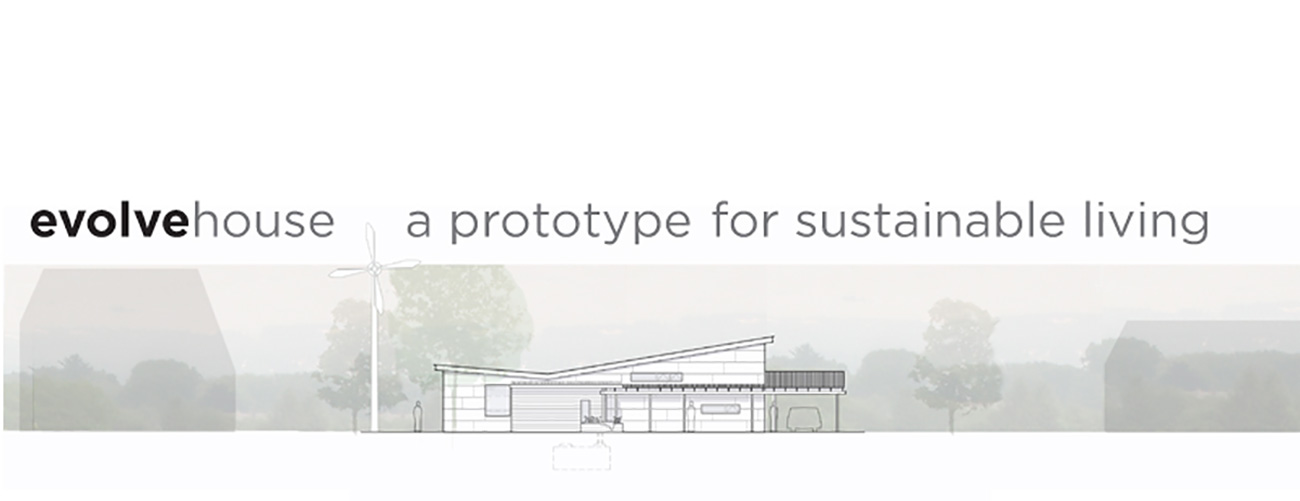evolve house
This 1,300 sq.ft. single story house design is currently under development by evolveEA for a rural north facing site with beautiful long views to a nearby farm and observatory. The BAR house’s open plan combines movable partitions with a compact, utility core to create a dynamic, affordable dwelling. This home is designed to use a minimum of energy for comfortable occupancy. A highly efficient shell created from SIPS panels and carefully placed glazing encloses a healthy interior that requires only the most modest of conditioning throughout the year(s).
a prototype for sustainable living::changing the way we live
Every decision is an environmental decision. The evolvehouse was born out of a request from a client to create a sustainable and affordable house that would allow her to live her later years in an uplifting and accessible environment. The evolvehouse rethinks the single family dwelling to find living patterns that are inspiring and healthy places to live, are easily maintained and affordable to operate, are economical to build, and minimize resource depletion and environmental degradation. The design for a detached residence had to be adaptable to a variety of site conditions, as many sites were reviewed and thus was thought of as a replicable prototype for sustainable living. evolvehouse strategies focus on the design of the unit, its enabling technologies and the construction process.
design
Good solutions always start with good design. The prototype needs to adapt to the client’s changing physical conditions and family situations within her modernist aesthetic aspirations. The prototype needs to be affordable to build and to be judicious in material use—the client’s very real budget of $180,000 became the benchmark for initial affordability. A conceptual approach to nesting systems of differing life spans, such as site, structure, enclosure, conditioning systems and interior systems, helps to give priority to design decisions, balancing initial cost against life cycle benefit.
enabling technologies
Technology is only a good solution when it is applied appropriately. Sustainable systems and materials have to be balanced by questioning if they offset future use of resources through their functioning, longevity, or other quality. Design decisions that eliminate mechanical systems or even finish materials increase affordability and efficiency of resource use. Using a nested systems approach, the prototype considers first the most permanent system, the site, to capture natural energy flows. Next, high performance structure and enclosure systems can minimize the need for conditioning systems and even finishes. Finally the least permanent aspect, the materials, finishes and fixtures can be selected for their use and ease of replacement and maintenance. The resource use of all materials and systems are considered, from manufacturing to disposal.
construction process
The act of construction involves the single largest expenditure of energy in the life of the building. The construction process affects affordability and systems integrity. Methods such as conventional stick framing, panelized or modular systems, and premanufactured systems were examined to balance human equity, affordability, integrity of systems and resource use.


